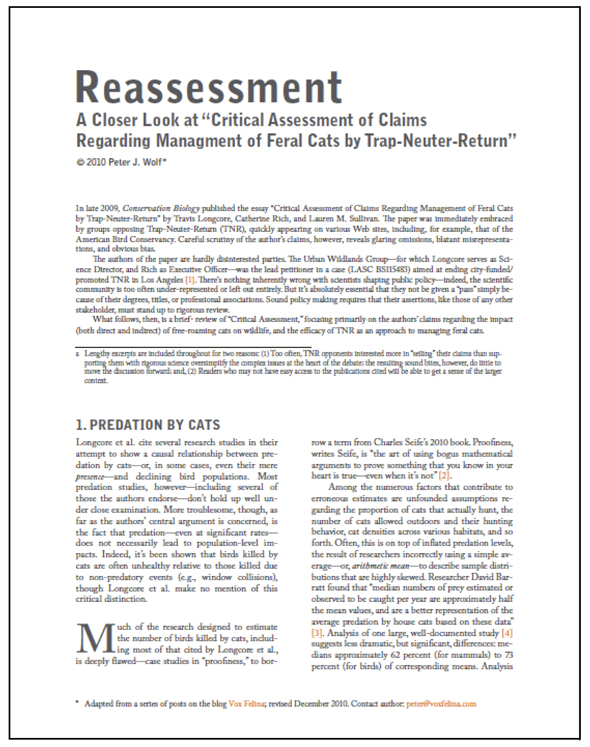“Reassessment: A Closer Look at ‘Critical Assessment of Claims Regarding Management of Feral Cats by Trap-Neuter-Return’” has been revised and expanded!

This paper, a brief review and critique of the essay “Critical Assessment of Claims Regarding Management of Feral Cats by Trap-Neuter-Return” by Travis Longcore, Catherine Rich, and Lauren M. Sullivan, now includes sections on Toxoplasma gondii, the mesopredator release phenomenon, and more. In addition, links and downloadable PDFs have been added to the list of references.
Over the past year, “Critical Assessment” has gotten a great deal of traction among TNR opponents, despite its glaring omissions, blatant misrepresentations, and obvious bias. “Reassessment”—intended to be a resource for a broad audience, including, wildlife and animal control professionals, policymakers, and the general public—shines a bright spotlight on these shortcomings, thereby bringing the key issues back into focus.
Act Locally
Politics is, as they say, local. This is certainly true of the debate surrounding TNR. Policies endorsing TNR, the feeding of feral cats, etc. typically begin with “Town Hall” meetings, or even meetings of neighborhood associations. “Reassessment” provides interested parties with a rigorous, science-based counter-argument to those using “Critical Assessment” as a weapon against feral cats/TNR.
So, once you’ve had a look for yourself, please share generously! Together, we can—in keeping with the mission of Vox Felina—improve the lives of feral cats through a more informed, conscientious discussion of feral cat issues in general, and TNR in particular.
Download PDF
